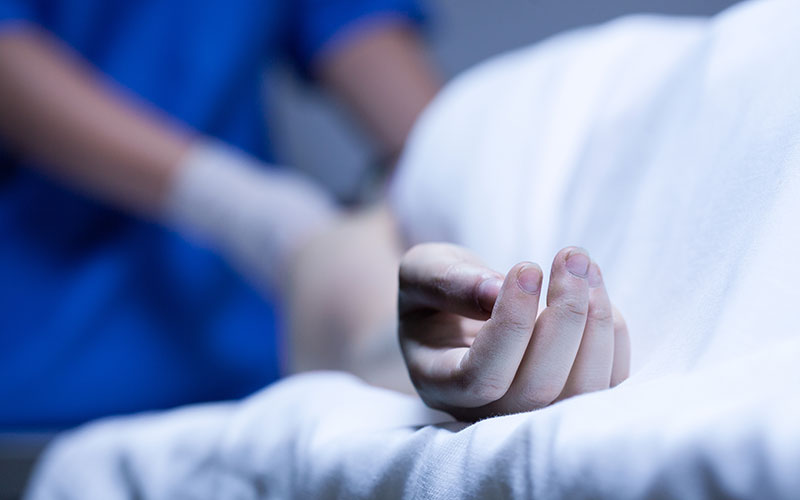Daisy Shale discusses the role of the Medical Examiner and looks at why the position is so vital.

I started as a trainee in 1998 at Macclesfield General Hospital specialising in Clinical Chemistry, Endocrinology and Immunology, and after five years qualified as a Biomedical Scientist. I had the opportunity to extend my clinical chemistry training and worked at the Manchester Children’s Hospital in the paediatric chemistry department. I then progressed to a senior biomedical scientist role at Sheffield Teaching Hospitals, where I took on the role as the Quality and Training Officer. In 2009, I decided to take on a unique role in Sheffield as a Medical Examiner’s Officer and the pilot lead for the Department of Health’s Medical Examiner project.
I am part of a team that implemented a pilot to assess the feasibility of an independent mortality and case record review, in which there is a review of all deaths by an independent Medical Examiner to ensure that appropriate treatment choices and diagnoses are made, and the coroner and clinical governance teams are notified of cases of interest. This requires a proportionate review of medical records and consideration of the circumstances leading to the death and, where appropriate, it makes use of clinical governance data to identify unusual patterns and trends.
Omissions and criminal acts
There are approximately 500,000 deaths in England and Wales each year, and each death will have varying impact on that individual’s family and loved ones, depending on the circumstances and experiences of those involved. After death the attending doctor must either complete a medical certificate of cause of death (MCCD), or inform the coroner if there is any element of the death that could be perceived as unnatural. At this time, there is an increasing need for confidence in the public services associated with the certification of death and burial or cremation.
As a society, we put our faith and trust in those involved in caring for our loved ones, and expect the same after death. In the large majority of deaths, this is of course the case, but there are also cases where unfortunately this does not happen, and in some cases there are errors, omissions and criminal acts throughout an individual’s last illness. This initially came to light in 1998 when it was discovered that Dr Harold Shipman had been murdering his patients with lethal doses of diamorphine, then falsifying the medical records and the medical certificate of cause of death.
The Shipman Inquiry in 2003 examined the process for death certification and the coroner system, and concluded that existing arrangements did not provide adequate safeguards and there was no independent check to confirm the cause of death and the family’s opinions regarding the circumstances.
The Department of Health was tasked with developing a system in which the focus is the review of all deaths by an independent medical examiner to ensure appropriate referrals to the coroner and accurate death certification.
This was unfortunately not a one off, as during recent years, there have been further examples of mismanagement, foul play and errors and omissions in healthcare throughout England (see box).
Independent scrutiny
As part of the Medical Examiner project, we evaluated the system and introduced an independent Medical Examiner to provide independent scrutiny of the cause(s) of death stated by doctors and the provision of care given during someone’s last illness. The delegation of this task to junior members of the team is commonplace, but junior doctors receive little training or continuing professional development regarding death certification. The Medical Examiner’s office is able to provide initial training in death certification, as well as individual case discussion with the attending doctor.
The role is to provide a proportionate review of medical records and consideration of the circumstances leading to the death, before the MCCD is issued to families, and in every case reviewed by the Medical Examiner the circumstances and cause of death are discussed with family members prior to issue.
This is a unique opportunity to identify concerns that were not initially apparent and refer them for investigation. Where appropriate, it also makes use of clinical governance data to identify unusual patterns and trends which can be highlighted to the coroner, patient safety team, or clinical governance and mortality reviewers within the trusts.
To date, the Medical Examiner system has reviewed the documents and circumstances of over 20,000 deaths, and have found the following:
- There are more appropriate referrals to the coroner – fewer cases referred not needing coroner’s investigation, and more cases referred that would have been overlooked.
- More appropriate investigation into concerns raised by families via the coroner or clinical governance routes.
- An increase in the number of hospital autopsies requested and or conducted.
- Less reluctance from junior doctors to complete the MCCD, as they feel they are given appropriate guidance and support.
- Entirely supportive feedback from families of the deceased indicating high level of confidence in the service.
- The system provides an independent review of an individual’s final illness, taking into account presentation, diagnosis, treatment and provision of care, with involvement from the attending clinical team and the family. This ensures any issues or errors are appropriately investigated and that the family has the opportunity to discuss the cause of death and raise questions to someone independent.
Daisy Shale is a Senior Medical Examiner’s Officer at Sheffield Teaching Hospitals NHS Foundation Trust
Examples of incidents
2002
A staff nurse in Leeds was discovered to be injecting elderly patients with insulin to induce cardiac arrest.
2008
The Healthcare Commission was alerted to the “apparently high mortality rates” in emergency admissions at Mid Staffs. An investigation was carried out in which the trust was criticised for the appalling conditions and inadequacies at the hospital. A further review in 2010 supported these findings.
2011
It was discovered that a staff nurse had been murdering patients with the intentional administration of insulin into saline drip solutions at Stepping Hill Hospital, Stockport.
2013
A report commissioned by NHS England after the death of a resident in a unit ran by Southern Health concluded that his death was preventable and that appropriate assessments had not been put in place.
2015
There was an enquiry into the deaths of 11 babies and a mother at Furness Hospital in Cumbria which found a “lethal mix” of failings at every level had lead to unnecessary deaths.




